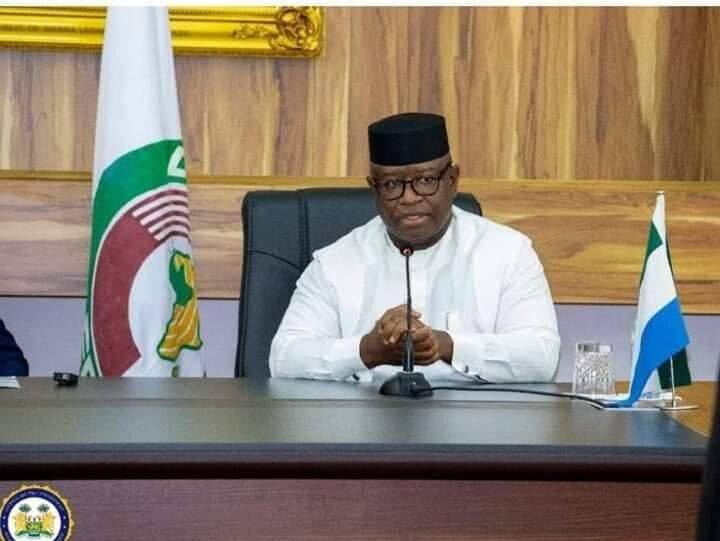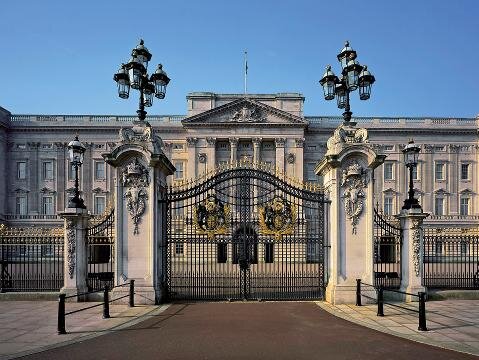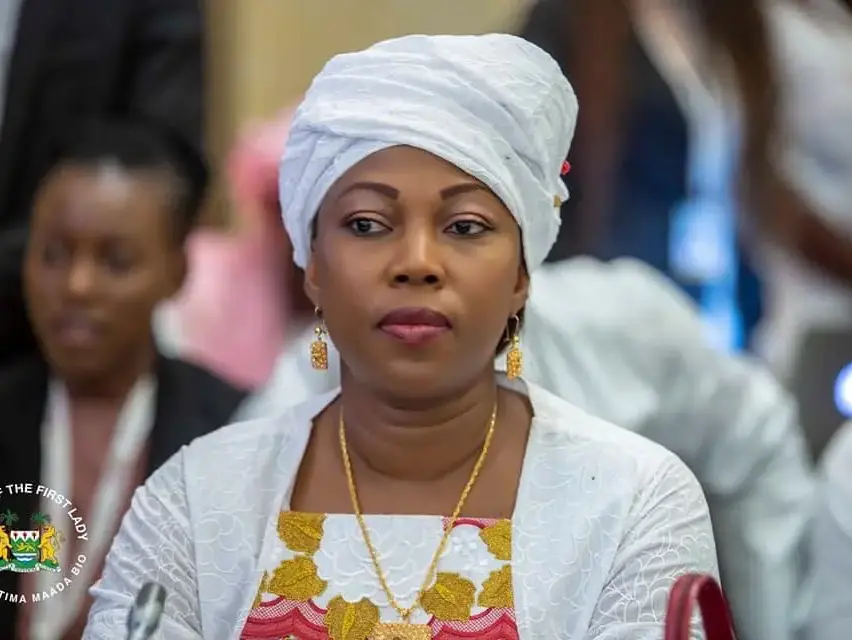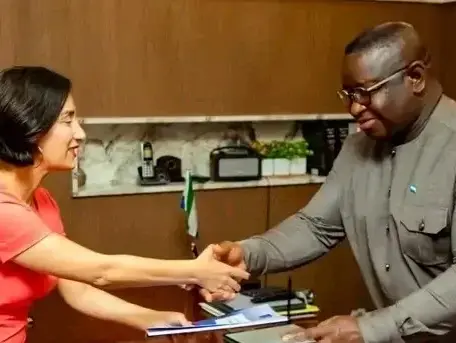Do we waist Votes? Is that why the PR is here with us? Is the PR aimed at damaging the main opposition or getting all on board?
Since the proclamation of the Proportional Representation (PR) system by Sierra Leone’s Electoral commissioner, Mohamed Konneh, on directives of the President in a guise consultation, the debate on the PR voting has had mixed feelings and has grasped the attention of citizens in all sphere of religion, profession and class.
Everyone is worried about the PR system of voting for fear of not directly choosing their MP they wish or not venting their anger through the ballot box on people they feel have left them either poorer, careless or lack the moral prowess to handle issues that concerns their constituencies or area of localities. This heightened fear is even more apparent in the minds of new voters and those who for decades have voted for simple majority style of voting system, the First Past The Post (FPTP).
In as much as this is the current emotional state for many eligible voters, the question lingers on in the mind on political polarity across regions, tribes and religions. The might, the highly politically connected persons, the rich and the most influential have always dominated their regions, wards and constituencies. The metamorphosed rhetoric among Sierra Leoneans of late in politics and among politicians have enlightened many voters on moving from party politics to policy, people-centric and development trend based politics rather than party colour politics. While this is arguable in political science with regards traditional and swing voters, it is apparent there would have been large swing voting come this 2023 multi-tier elections if the FPTP was left in motion with independent candidates moving half the voters for seats.
The emergence of the swarm of independent candidates originate from economic hardship, lack of respect for voters, clannish, ”connectocracy” and gerontocratic dispensations in our current political landscape. The swarm of revolutionist will in no doubt kill parties if left unchecked with the PR system. Everyone wants to be represented and the waste of votes equally means some amount of people in the FTPT also require representation. So what do we make of the PR system of voting and in the sphere of independent candidates?
Proportional representation is the idea that the seats in parliament should be in proportion to the votes cast and not merely who gets the highest votes go in and careless about others who voted for the candidate that gets less votes but half the amount of all eligible voters.
In simple terms, there are lots of different ways to decide who gets to sit in parliament, some are more proportional and some are less. A more proportional way would mean that a party that received one-third of the vote could expect one-third of the seats in parliament.
There are several ways of electing MPs including, Party List Proportional Representation, the Single Transferable Vote and the Additional Member System. They are designed with the aim of being more proportional.
Other methods, such as Westminster’s First Past the Post, the Alternative Vote and Supplementary Vote can be reasonably proportional in the right circumstances, but will usually not be. These are known as ‘majoritarian’ and it means that a party who get one-third of the vote might get one-third of the seats, or they might get half or none at all.
Within the more proportional systems, there are different ways of electing MPs. With some, you only vote for a party, with others, you vote directly for candidates.
Rather than the all-or-nothing approach of First Past the Post, each area elects more than one representative. The size of this area can vary according to the system, ranging from the size of the whole country to a county or village. This means that you have a team of MPs that reflect the strength of the different political opinions in your area.
In sierra Leone, we have the district block system. By the look of things, we will be doing a district block system except otherwise the rules are changed in parliament and within the ECSL delivery path. The district block can go by party listing. It is unclear if candidate listing will be done. In any case, let us look at the district block and party listing route and candidate listing route.
Party List Proportional Representation
In Party List systems, seats in parliament closely match how many votes each party receives, but there is often a weaker constituency link. Party Lists are the most popular way to elect representatives in the world, with more than 80 countries using a variation of this system to elect their parliament. According to the UK’s Electoral Reform Society, “Party list systems can be very proportional, but if voters can’t pick their representatives, the politicians don’t have a strong link with their voters”. Inversely, they cannot be held responsible. So, they represent the party more than their people so collective party responsibility to the people and not individual.
Ways Of Voting Under Party Listing PR
In party Listing we have three ways to vote for candidates namely; closed, Open list and semi-open list.
Closed List: Each party publishes a list of candidates for each area. On polling day the ballot paper just has a list of parties. Voters mark the party they support. In this system, a party gets seats roughly in proportion to its vote, and seats are filled depending on the order of the list the party choose in advance. “While closed party-list PR is very proportional, they empower parties rather than voters by giving them control over who is elected” (UK’s Electoral Reform Society).
Open List: On the ballot paper, each party has a list of candidates. The more votes a candidate gets, the more likely to be in the party’s group of MPs that get elected. A vote for a candidate is counted as a vote for their party when it is decided how many seats each party should receive. This means it is possible for a vote for a candidate to help a candidate a voter dislikes, if that candidate is popular with the supporters of the rest of their party. In some countries, you can just vote for a party and leave the ordering of the candidates up to the other voters.
Semi-Open List: In a semi-open list voters are presented with a ballot with the option to vote for a candidate or a party. Unlike in an open list, voting for a party is taken as an endorsement of the order of candidates chosen by the party. With enough individual votes, candidates can still move up the ordering though.
Counting Votes in Party listing
There are two main methods of allocating seats in party-list elections. The D’Hondt method, which slightly favours larger parties and the Sainte-Laguë method which doesn’t.
Features and Effects
Countries with party-list PR tend to have lots of parties as list systems are highly proportionate. This means that coalition is often the norm. With a lower barrier to entry, new parties can start and be successful if the larger parties do not understand new social issues. Many countries use legal thresholds, generally 4 or 5% to stop parties with very low support winning seats.
It is possible to have party-lists with either very large or smaller constituencies. For instance, in the Netherlands and Israel the entire country is one big constituency. In other countries smaller constituencies are used. For instance in Finland and Spain provinces are used.
The advantage of smaller constituencies is that MPs are closer to local issues, as different areas will have different problems. But constituencies with fewer MPs are also less proportionate as you need more votes to win an MP. Party lists, as the name suggests, are based on the idea of political parties, so independent candidates have to create a ‘party list’ of one. If they win more votes than they need to get elected these votes are wasted.
Single Transferable Vote
The other type of PR under parties is called the Single Transferable Vote (STV). In SVT, the strength of the parties matches the strength of their support in the country, and representatives – for example, Members of Parliament – have a strong connection to their local area.
What is the Single Transferable Vote?
The Single Transferable Vote (STV) is a form of proportional representation created in Britain. Northern Ireland, the Republic of Ireland, Malta, Scotland and Australia use this system for some or all of their elections. In America, it is often referred to as ‘ranked-choice voting in multi-member seats’, in Australia they call it ‘Hare-Clark’.
How does the Single Transferable Vote system work?
Rather than one person representing everyone in a small area, bigger areas elect a small team of representatives, such as 4 or 5. These representatives reflect the diversity of opinions in the area. On election day, voters number a list of candidates. Their favourite as number one, their second favourite number two, and so on. Voters can put numbers next to as many or as few candidates as they like. Parties will often stand more than one candidate in each area. The numbers tell the people counting to move your vote if your favourite candidate has enough votes already or stands no chance of winning.
How it’s counted ?
To get elected, a candidate needs a set amount of votes, known as the quota. The people counting the votes work out the quota based on the number of vacancies and the number of votes cast. Each voter has one vote. Once the counting has finished, any candidate who has more number ones than the quota is elected. But, rather than ignore extra votes a candidate received after the amount they need to win, these votes move to each voter’s second favourite candidate. If no one reaches the quota, then the people counting the vote remove the least popular candidate. People who voted for them have their votes moved to their second favourite candidate. This process continues until every vacancy is filled.
Effects and Features
The Single Transferable Vote is an electoral system that puts the power in the hands of the public. Evidence from Scotland and Ireland suggests voters use it in quite sophisticated ways. Voters can also choose between candidates from the same party or different parties. This means voters can elect all MPs based on their individual abilities. Voters can also vote for independent candidates without worrying about wasting their vote. Ireland has many independent MPs, as do some Scottish councils. Constituencies are more natural, covering a whole town or a county. This creates a recognisable local link, and gives voters a choice of representatives to talk to.
It will be interesting to know which rules will be applied by the ECSL. What ever route is taken, this must be quickly conveyed to better prepare the minds of people and especially for politicians and independent candidates. Otherwise, it might be viewed as a deceit and deprivation of their right to know better ways to express their franchise.






